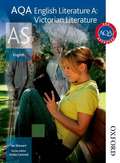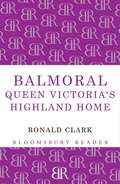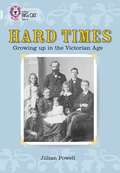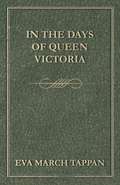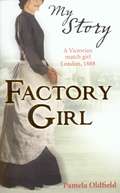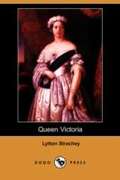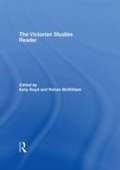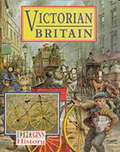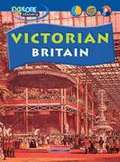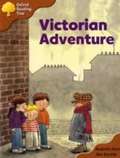Special Collections
Victorians ... are they villainous?
Description: Books and images suitable for project and theme based learning on Victorian times
- Table View
- List View
AQA English Literature A
by Ian StewartWith a range of blended resources, 'AQA English Literature A' offers coverage and support through a variety of printed and electronic media.
Balmoral
by Ronald W. ClarkFirst published in 1981, this is Ronald Clark's engagingly readable account of Queen Victoria's relationship with "Our dear Balmoral" and the life that went on there. The biography of Balmoral begins with the first visit to Scotland of the young Queen Victoria and her husband Prince Albert in 1842. Five years later, while bad weather envelops the Royal party in western Scotland, the son of the Queen's physician, convalescing in Old Balmoral, reports blazing sunshine from Upper Deeside. The death of his host shortly afterwards opens the way for the Royal acquisition of the Balmoral estate and the building of the new Castle in 1853-55. In the period up to Albert's death in 1861 Balmoral becomes the setting for many of the Royal couple's happiest moments as they revel in the beauties of the scenery, relish the picturesque pageantry of Highland life, enjoy their incognito expeditions into the surrounding country, and - in Albert's case - discover a passionate enthusiasm for deer-stalking. After the Prince Consort's death Balmoral becomes a mausoleum of memories, but also a source of strength enabling the Queen to survive her devastating loss. About the time of the Golden Jubilee of 1887 there is an Indian summer, with members of the Queen's extensive family rallying round and dances and entertainments displacing some of the black-crepe gloom. In 1896 there is the colorful visit of the Tsar, with his wife and daughter. The closing section links Victorian Balmoral with the life of the Castle today. 9781448202331 9781448202331
Collins Big Cat - Hard Times
by Jillian PowellImagine you were a child in Victorian times. What was your day like? What did you wear, eat and play with? Did you go to school, or out to work? Find out what life was like for children in this enthralling non-fiction book. * Diamond/Band 17 books offer more complex, underlying themes to give opportunities for children to understand causes and points of view. * A timeline on pages 54 and 55 help children to recap the main events of the Victorian era. * Text type: A non-chronological report * This book is paired with Moving Out a fiction story set in the past about a family in post-World-War-Two London deciding whether to move out to a New Town. * Curriculum links: History: What was it like for children living in Victorian Britain. * This book has been quizzed for Accelerated Reader
In the Days of Queen Victoria
by Eva March TappanThis early work by Eva March Tappan was originally published in 1903 and we are now republishing it with a brand new introductory biography. 'In the Days of Queen Victoria' is a biography of Queen Victoria and details aspects of her school days, her coronation, and her family life. Eva March Tappan was born on 26th December 1854, in Blackstone, Massachusetts, United States. Tappan began her literary career writing about famous characters from history in works such as 'In the Days of William the Conqueror' (1901), and 'In the Days of Queen Elizabeth' (1902). She then developed an interest in children's books, writing her own and publishing collections of classic tales.
My Story
by Pamela OldfieldEverybody knows the sad tale of the Little Match Girl, but less well known is the story of the girls and women who slaved fourteen hours a day in the match factories for appalling pay, only to contract such fatal complaints as phossy jaw. The brutality of these conditions was brought to a head with the London Match Girls Strike of 1888. Told from the perspective of a young factory worker, this new title offers a fascinating insight into Victorian child labour.
Queen Victoria
by Lytton StracheyGiles Lytton Strachey (1880-1932) was a British writer and critic. He is best known for establishing a new form of biography in which psychological insight and sympathy are combined with irreverence and wit. From time to time throughout his life Strachey studied Italian, German, and French. Landmarks in French Literature was published in 1912. By 1916 Strachey's theory of biography was fully developed and mature. He was being greatly influenced by Dostoevsky. His first great success, and his most famous achievement, was Eminent Victorians (1918), a collection of four short biographies of Victorian heroes. This work was followed in the same style by Queen Victoria (1921). Amongst his other works are Books and Characters: French and English (1922), Elizabeth and Essex: A Tragic History (1928), Portraits in Miniature (1931) and Characters and Commentaries (1933).
The Victorian Studies Reader (Routledge Readers in History) (PDF)
by Boyd, Kelly|McWilliam, RohanSelected as an 'Outstanding Academic Title'in the 2008 CHOICE awards, The Victorian Studies Reader gathers together, in one volume, some of the key pieces on Victorian history, society and culture. The book draws onnew trends in looking at the Victorian Age and includes sections on: periodization politics consumerism intellectual life sexuality empire. The Victorian Studies Reader is a rich resource, essential for all those studying this important period of history.
Ginn History
by John SampsonThis primary school history book focuses on Victorian Britain and what it was like for the people living in that time. Looking at different houses, shops, the lives of rich and poor families, working life, travel and transport, entertainment and the arts, crime and punishment, medicine, religion, law and the British Empire.
Exploring History
by Jane ShuterThis series gives easy-to-use support for the QCA Scheme of Work for history at KS2. It poses a question about an aspect of history and then answers it with the help of written and pictorial primary sources.
Oxford Reading Tree, Stage 8, Storybooks, Magic Key
by Roderick HuntThe magic key takes Biff, Chip and Kipper back to Victorian London for another adventure.
Oxford Reading Tree, Stage 8, Storybooks, Magic Key
by Roderick HuntThe magic key takes Biff, Chip and Kipper back to Victorian London for another adventure.
Victoria Cross (tactile)
by RnibThe Victoria Cross is the highest award for bravery in for the British and Commonwealth Forces. The first Victoria Cross (VC) was given in 1856. It is awarded "for most conspicuous bravery, or some daring or pre-eminent act of valour or self-sacrifice, or extreme devotion to duty in the presence of the enemy". The British monarch presents the VC to the winner. If the winner has died, the medal is presented to their family. All VC medals are made from bronze that comes from a gun captured from the Russians during the Crimea War. Each VC is unique and hand-made by the London jeweller, Hancocks. The VC is similar in shape to a Maltese cross and it is almost 1.54 inches (34mm) wide. It hangs from a wine red ribbon which slots into a straight bar decorated with laurel leaves. A "V" shaped lug is joined to the straight bar. The lug is connected to an oval shaped link. The Cross hangs from this link. The Royal crest is on the back of the medal in the centre of the cross. This crest is a side view of a standing lion wearing a crown with its tail held up over its body. This is called a Lion Statant Guardant and it stands over the crown of the British monarch. Underneath the lion and crown is a semi-circular `banner' with the words "For Valour". At each end of the banner are two small "V"s with little spheres on the tips of the "V"s. The name of the person receiving the award, their rank, number and unit are on the back of the straight bar. The date of the brave act is written in the centre of the back of the cross. Tactile image details This image shows the medal hanging from the straight bar on the wine red ribbon, of which just a small length is shown. The braille labels added are: wine red ribbon, straight bar with laurel leaves, oval link, "V" shaped lug, lion with crown, monarch's crown, banner with "For Valour", and end of banner with spheres.
A cross section of the left side of the lower floors of a Victorian house (UEB uncontracted)
by RnibThis image shows a side view of a cross section through a Victorian house. There is a locator dot shown, which will be at the top left of the page when the image is the right way up. In the bottom left of the image the ground level is marked. To the right in the basement of the house is the scullery with a small window shown as a dashed line. To the right of the window in the scullery is a big sink with two taps. There is a water jug on the work surface. To the right are containers on shelves attached to the wall. To the right on the floor is a bucket, a washing basket and a brush. The drawing room on the next floor up has a large window on the left. Right of this is a stool and a piano with the lid open. Two of the stool's four legs and two of the piano's three legs are shown. Up and right from here is a picture hanging on the wall in a decorative frame. To the right is a door to another room. In the middle of the image is a fireplace with a circular mirror hanging on the wall up from it. Right from here are some lights hanging from the ceiling. Down from them is a soft chair with two of its four legs shown. On the right of the image is a large cupboard and then another large window. On the first floor on the left is a window. To the right is a wardrobe with double doors. To its right is a chest of drawers with a picture hanging on the wall in a decorative frame up from it. Right from this is a large four-poster bed with the drapes pulled aside. To the right is the nursery, a small room with a cot which has a hood. There is a window to the right.
A cross section of the left side of the lower floors of a Victorian house (UEB contracted)
by RnibThis image shows a side view of a cross section through a Victorian house. There is a locator dot shown, which will be at the top left of the page when the image is the right way up. In the bottom left of the image the ground level is marked. To the right in the basement of the house is the scullery with a small window shown as a dashed line. To the right of the window in the scullery is a big sink with two taps. There is a water jug on the work surface. To the right are containers on shelves attached to the wall. To the right on the floor is a bucket, a washing basket and a brush. The drawing room on the next floor up has a large window on the left. Right of this is a stool and a piano with the lid open. Two of the stool's four legs and two of the piano's three legs are shown. Up and right from here is a picture hanging on the wall in a decorative frame. To the right is a door to another room. In the middle of the image is a fireplace with a circular mirror hanging on the wall up from it. Right from here are some lights hanging from the ceiling. Down from them is a soft chair with two of its four legs shown. On the right of the image is a large cupboard and then another large window. On the first floor on the left is a window. To the right is a wardrobe with double doors. To its right is a chest of drawers with a picture hanging on the wall in a decorative frame up from it. Right from this is a large four-poster bed with the drapes pulled aside. To the right is the nursery, a small room with a cot which has a hood. There is a window to the right.
A cross section of the left side of the lower floors of a Victorian house (large print)
by RnibThis image shows a side view of a cross section through a Victorian house. There is a locator dot shown, which will be at the top left of the page when the image is the right way up. In the bottom left of the image the ground level is marked. To the right in the basement of the house is the scullery with a small window shown as a dashed line. To the right of the window in the scullery is a big sink with two taps. There is a water jug on the work surface. To the right are containers on shelves attached to the wall. To the right on the floor is a bucket, a washing basket and a brush. The drawing room on the next floor up has a large window on the left. Right of this is a stool and a piano with the lid open. Two of the stool's four legs and two of the piano's three legs are shown. Up and right from here is a picture hanging on the wall in a decorative frame. To the right is a door to another room. In the middle of the image is a fireplace with a circular mirror hanging on the wall up from it. Right from here are some lights hanging from the ceiling. Down from them is a soft chair with two of its four legs shown. On the right of the image is a large cupboard and then another large window. On the first floor on the left is a window. To the right is a wardrobe with double doors. To its right is a chest of drawers with a picture hanging on the wall in a decorative frame up from it. Right from this is a large four-poster bed with the drapes pulled aside. To the right is the nursery, a small room with a cot which has a hood. There is a window to the right.
Victorian house with cesspit (large print)
by RnibThis is a cutaway cross section view of a typical Victorian town house showing the cesspit in its cellar. There is a locator dot shown, which will be at the top left of the page when the image is the correct way up. The house is on the left of the page with its first floor shown at the top left of the image. Down the page is the living room and down again is the cellar containing the cesspit. In the centre of the cellar is an arch that supports the floor of the living room above. On the right of the page, level with the floor of the living room, is a cross section view of the street.
Victorian house with cesspit (UEB uncontracted)
by RnibThis is a cutaway cross section view of a typical Victorian town house showing the cesspit in its cellar. There is a locator dot shown, which will be at the top left of the page when the image is the correct way up. The house is on the left of the page with its first floor shown at the top left of the image. Down the page is the living room and down again is the cellar containing the cesspit. In the centre of the cellar is an arch that supports the floor of the living room above. On the right of the page, level with the floor of the living room, is a cross section view of the street.
A Victorian baker and bread oven (UEB uncontracted)
by RnibThis image shows a baker facing forwards to the left and the bread oven to the right. There is a locator dot shown, which will be at the top left of the page when the image is the right way up. The baker is wearing a flat hat in the top left of the page. Both eyes and ears can be found. He has a long apron which goes down to his shins. He is holding a large paddle called a peel in both hands. It extends diagonally to the right and at the end there is a loaf of bread. At the bottom of the page below the loaf of bread is a sack of flour. Just to the left some of the flour has spilt on the floor. On the right of the page is a large oven with a heavy door towards the top. The uncooked loaves of bread would be put through this door into the oven to bake.
A Victorian baker and bread oven (large print)
by RnibThis image shows a baker facing forwards to the left and the bread oven to the right. There is a locator dot shown, which will be at the top left of the page when the image is the right way up. The baker is wearing a flat hat in the top left of the page. Both eyes and ears can be found. He has a long apron which goes down to his shins. He is holding a large paddle called a peel in both hands. It extends diagonally to the right and at the end there is a loaf of bread. At the bottom of the page below the loaf of bread is a sack of flour. Just to the left some of the flour has spilt on the floor. On the right of the page is a large oven with a heavy door towards the top. The uncooked loaves of bread would be put through this door into the oven to bake.
Victorian boy with hoop (UEB contracted)
by RnibThis is a picture of a Victorian boy running and rolling a toy hoop along the road. There is a locator dot shown, which will be at the top left of the page when the image is the correct way up. The boy is wearing a blue peaked hat on his head at the top centre of the page. He is seen from the side and facing to the right so that only one of his eyes and ears can be found. Down the page, the boy wears a red kerchief tied around his neck. The boy wears a blue shirt and has one arm stretched out behind him to the left. His other arm is to the right with his hand holding a stick. Further down, one of his legs goes down and left, while the other extends to the ground at the bottom of the page. He is wearing orange trousers and has bare feet. To the right of the boy is the round ring shape of the hoop. The boy is rolling it along the road using the stick in his hand to control it.
Victorian boy with hoop (large print)
by RnibThis is a picture of a Victorian boy running and rolling a toy hoop along the road. There is a locator dot shown, which will be at the top left of the page when the image is the correct way up. The boy is wearing a blue peaked hat on his head at the top centre of the page. He is seen from the side and facing to the right so that only one of his eyes and ears can be found. Down the page, the boy wears a red kerchief tied around his neck. The boy wears a blue shirt and has one arm stretched out behind him to the left. His other arm is to the right with his hand holding a stick. Further down, one of his legs goes down and left, while the other extends to the ground at the bottom of the page. He is wearing orange trousers and has bare feet. To the right of the boy is the round ring shape of the hoop. The boy is rolling it along the road using the stick in his hand to control it.
Victorian boy with hoop (UEB uncontracted)
by RnibThis is a picture of a Victorian boy running and rolling a toy hoop along the road. There is a locator dot shown, which will be at the top left of the page when the image is the correct way up. The boy is wearing a blue peaked hat on his head at the top centre of the page. He is seen from the side and facing to the right so that only one of his eyes and ears can be found. Down the page, the boy wears a red kerchief tied around his neck. The boy wears a blue shirt and has one arm stretched out behind him to the left. His other arm is to the right with his hand holding a stick. Further down, one of his legs goes down and left, while the other extends to the ground at the bottom of the page. He is wearing orange trousers and has bare feet. To the right of the boy is the round ring shape of the hoop. The boy is rolling it along the road using the stick in his hand to control it.
Victorian gentry (UEB Contracted)
byThis image shows a lady on the left and a gentleman on the right of the page. There is a locator dot shown, which will be at the top left of the page when the image is the right way up. They are facing forwards so both eyes, arms and legs can be found. The lady's head is in the top left of the page. She has ringlets to the left and right of her face. Down from her face she has a necklace around her neck. She wears an evening gown (dress) with bare shoulders and sleeves that end in a decorative cuff at the elbow. She has a bracelet on each wrist. From her waist the dress is very full and reaches the ground so her feet cannot be found. In her hand on the right she has a fan. The gentleman wears a top hat in the top right of the page. His shirt has a high collar and he wears a bow tie. He has a jacket with tails which comes to his waist at the front, and to just below his knees at the sides and back. The jacket has broad lapels to the left and right of the shirt. He has a waistcoat with three buttons, the jacket has two buttons. His trousers come down to his ankles where he has leather shoes. In his hand to the right he has a walking cane.
Victorian gentry (UEB Uncontracted)
byThis image shows a lady on the left and a gentleman on the right of the page. There is a locator dot shown, which will be at the top left of the page when the image is the right way up. They are facing forwards so both eyes, arms and legs can be found. The lady's head is in the top left of the page. She has ringlets to the left and right of her face. Down from her face she has a necklace around her neck. She wears an evening gown (dress) with bare shoulders and sleeves that end in a decorative cuff at the elbow. She has a bracelet on each wrist. From her waist the dress is very full and reaches the ground so her feet cannot be found. In her hand on the right she has a fan. The gentleman wears a top hat in the top right of the page. His shirt has a high collar and he wears a bow tie. He has a jacket with tails which comes to his waist at the front, and to just below his knees at the sides and back. The jacket has broad lapels to the left and right of the shirt. He has a waistcoat with three buttons, the jacket has two buttons. His trousers come down to his ankles where he has leather shoes. In his hand to the right he has a walking cane.
